Texas A&M Energy Institute Graduate Fellowships
The Texas A&M Energy Institute has offered graduate fellowships to reward excellence in energy research, promote research that is important to our energy future, and encourage students to pursue careers in energy.
2023-24 Fellows
| Student | Advisor |
| Guowen Li | Dr. Zheng O’Neill |
| Oluwakemi Anu Olofinnika | Dr Esuru Okoroafor |
| Parth J Shah | Dr. Joseph Kwon |
| Dorsa Talebi | Dr. Hamid Toliyat |
| Yihao Yang | Dr. Hongcai Zhou |
2022-23 Fellows
| Student | Advisor |
| Bhavana Bhadriraju | Dr. Joseph Kwon |
| Harrison Block | Dr. Felix Mormann |
| Abheek Chatterjee | Dr. Astrid Layton |
| Connor Orrison | Dr. Dong Son |
| Mohammad Lameh | Dr. Patrick Linke |
| Jerome Sfeir | Dr. Jean-Louis Briaud |
| Rahman Syed | Dr. Irfan Khan |
| Chunwu Zhu | Dr. Xinyue Ye |
2019-20 Fellows
2019-20 Energy Institute Fellows
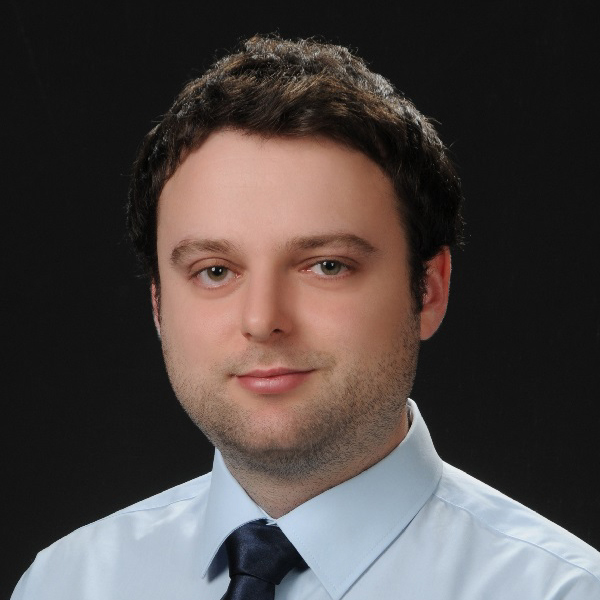
Emre Demirel
- Department: CHEN
- Advisor: M. M. Faruque Hasan
- Research Topic: “Systematic Process Intensification using Building Blocks”
Process intensification refers to the development of chemical processing techniques and equipment that lead to substantially smaller, cleaner, safer, and more energy-efficient processes compared to their traditional counterparts. Often times, intensification alternatives are not known beforehand and identification of such novel solutions during the conceptual design stage, where the initial layout of the chemical plant is decided, necessitates systematic design methodologies. To this end, we developed an optimization-based method for the discovery of new chemical process designs. This method relies on an original representation of chemical process operations using building blocks. These blocks represent the fundamental physicochemical phenomena, tasks and unit operations that constitute most of the processes used in the chemical process industry (CPI). Various combinations of building blocks can yield a plethora of new equipment and flowsheets. A mixed-integer nonlinear programming (MINLP) optimization model is used to describe the systematic selection of optimal block combinations towards generating an intensified process system. The MINLP model incorporates mass and energy conservations, and descriptions of reaction, separation and material selection. With this generic optimization model, building block-based design methodology provides an automated approach for generation and screening of novel intensified process alternatives.

Sualeh Khurshid
- Department: AERO
- Advisor: Diego A. Donzis
- Research Topic: “Energy Transfers and Exchanges in Turbulent Flows: Fundamental Understanding and Modeling Paradigms”
Turbulent flows are ubiquitous in nature and engineering systems and are critical to the efficient production and consumption of energy in conventional and future energy systems. Turbulence has first-order effects on critical processes, such as mixing of fuel and oxidizers, drag over cars and airplanes, and power generation from wind energy. Yet, turbulence is a notoriously difficult problem, especially at realistic conditions, due to a wide range of interacting spatial and temporal scales. Fundamental understanding of these interactions is currently lacking and is critical to developing predictive capabilities for turbulent systems. We use massively parallel supercomputers for direct numerical simulations (DNS) to solve the exact equations of fluid motion across all scales, without any modeling, and with a resolution an order of magnitude larger than traditional DNS. This provides a new window into the finest scales of turbulence, largely unstudied yet, and their interactions. We are also developing a theoretical formalism to predict the statistical behavior of turbulence at realistic flow conditions by understanding the behavior of the finest scales at smaller parameter ranges. These parameter ranges and resolutions are computationally accessible on the largest supercomputers today, unlike flows at realistic conditions. In doing so, we aim to further our understanding of dynamics within different scales of turbulent flows and advance the theoretical development of exact theories as well as low-fidelity models of turbulence for engineering design and computational predictive capabilities.
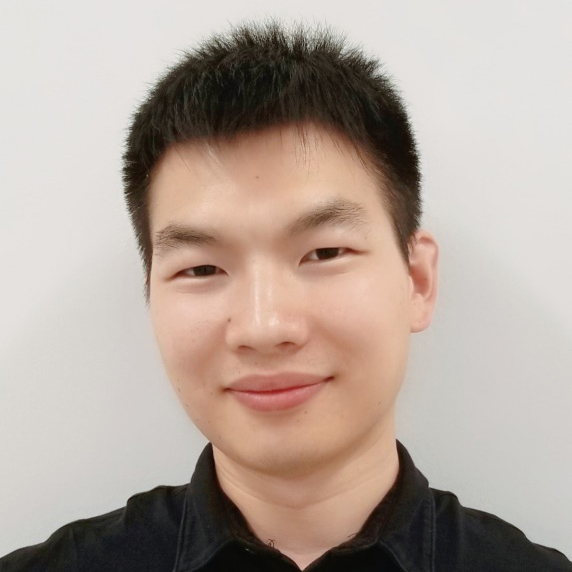
Bin Long
- Department: PLPM
- Advisor: Joshua S. Yuan
- Research Topic: “Continuous Ultra-high-yield Co-production of Hydrocarbon and Carbohydrate from CO2 to Transform Biofuel Production”
Algae-based biofuels have been regarded as an ultimate solution for renewable energy, considering the potentially high productivity, the efficient energy conversion from sunlight, the capacity to capture and utilize CO2 at high conversion rates, and the replacement of fossil fuels with limited land usage. Despite extensive efforts, the scale-up and commercialization of algal biofuel are still hindered by several fundamental challenges, including low light penetration, costly dewatering and the requirement to extract algal oil. In my graduate research, I designed an auto-flocculation-based continuous hydrocarbon and carbohydrate co-production platform to address these challenges. In the platform, the cell surface structure of cyanobacteria was modified to enable auto-flocculation, which can be applied to reduce costs for biomass harvesting and transform cyanobacterial biofuel from batch production to continuous production. Meanwhile, a limonene synthase was introduced into the strain to catalyze limonene biosynthesis, enabling continuous limonene and glycogen (in biomass) co-production. Since the cell density of cyanobacteria can be tightly controlled in continuous production, light penetration efficiency could be significantly improved, leading to dramatic increases in both limonene and glycogen productivities. Next, I am focusing on: 1) to continue to optimize and scale up the Continuous Ultra-high-yield Co-production of Hydrocarbon and Carbohydrate to achieve long-term sustainable production; and 2) to define the biochemical and metabolic limits for terpene production and further improve terpene and glycogen productivities by systemically optimizing carbon and energy partition from photosynthesis to hydrocarbon and carbohydrate biosynthesis.
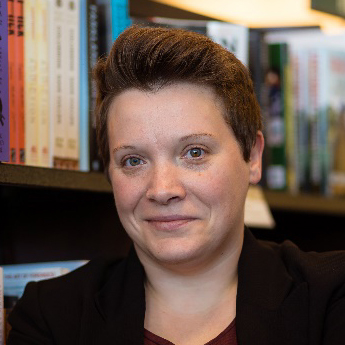
Amber Salamanca-Blazek
- Department: SOCI
- Advisor: Harlan Prechel
- Research Topic: “The Effects of Organizational and Social Vulnerability Characteristics on Greenhouse Gas Emissions among Electric Power Plants in the Greater Houston Region”
The adverse effects of pollution on the environment continue to be a central concern among environmental sociologists and environmental justice scholars. The negative effects of environmental pollution on vulnerable populations and the effects of organizational characteristics on pollution levels have been well documented. However, less attention has been given to the joint effects of social vulnerability and organizational characteristics on pollution. Further, few studies examine the effects of these sociological variables on greenhouse gas (GHG) emissions. To fill this gap in the literature, this project examines the effects of sociological variables on GHG emissions from all-electric power plants in Harris County and surrounding counties. There are three interrelated questions addressed in this research: (1) How do organizational characteristics affect pollution levels among electric power plants? (2) How do community-level social vulnerability characteristics affect pollution levels? (3) How does the interaction between organizational and social vulnerability characteristics affect pollution levels? Geographic information systems (GIS) spatial analyses and regressions are used to test for the effects of organizational variables (e.g., organizational complexity and organizational type) and social vulnerability variables (e.g., plant location relative to low-income and majority-minority race communities, community income level, and community percent minority).
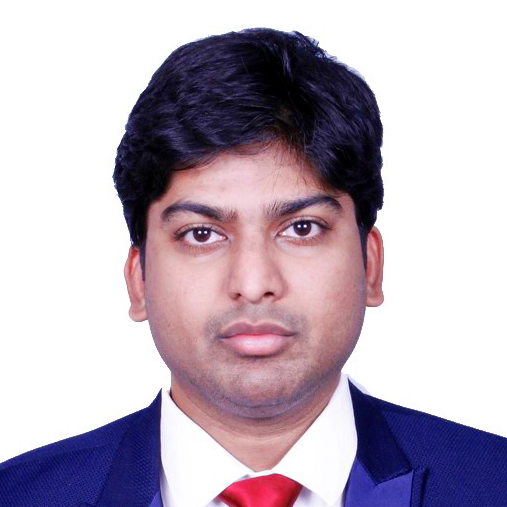
Dabeeruddin Syed
- Department: ECEN
- Advisor: Haitham Abu-Rub
- Research Topic: “Real-time Data Analytics Platform for Integration of Fluctuating Renewable Energies into the Smart Grid”
Citing energy and environmental reasons, many individuals argue that it is time to adopt renewable energy sources (RES) and transform grids into smarter grids. The deployment and integration of fluctuating renewable energy into the power grid and the eventual transformation into a smart grid will require the use of advanced technologies and management strategies. My research is focused on the development of a real-time big data analytics platform for both the current grid and for future smart grids. The project focuses on developing big data analytics, predictive analytics, forecasting analytics, cyber-physical security and privacy for accurate and efficient energy consumption forecasting. This will lead to the development and testing of a dynamic energy management system with a big data analytics platform, which will help in the optimization of energy resources and load management for both energy efficiency and demand response programs based on real-time processing. Big data analytics and machine learning will help integrate renewable energy sources with energy storage and forecast services while considering uncertainty and customer behavior. Also, mining information from big data available from smart grids makes it possible to prevent blackouts, as it enables the discovery of underlying patterns and an understanding of the highly complex structures and thousands of system variables of a power network, thus paving the way to accurately predict the unstable status of power network components in-time. Currently, I am working on the applications of load forecasting and voltage stability analysis using deep learning models. In tandem, centralized and distributed control strategies are being worked upon and a combination of the RTP program with the IBR model will be used as the most efficient model for energy demand management.
2018-19 Fellows

Nathaniel Hawthorne
- Department: CHEM
- Research Topic: “Strain-Controlled Reactivity of Graphene, and its Impact on Graphene’s Viability as a Wear-Mitigating Lubricant”
The loss of energy through friction at sliding interfaces is a significant issue. Graphene, a single-atom thick, two-dimensional lattice of honeycomb structured carbon, has been shown to be a potentially useful lubricant to decrease friction and mitigate wear at sliding interfaces. However, studies have shown that when conformed to nanoscopically rough surfaces, the graphene lattice is strained, leading to an increased risk of mechano-chemically accelerated oxidation and breakdown. My research is a fundamental examination of the reactivity of graphene under varying amounts of strain. Lattice strain can be tailored by transferring graphene to silica nanoparticle films of varying particle diameter, or by applying pressure to suspended graphene membranes. Raman spectroscopy and ambient pressure XPS can then be used to monitor the reactivity of these systems with O2, or with a diazonium compound. Studying strained and suspended graphene helps build a stronger understanding of the role strain has on graphene reactivity, and ultimately the viability of graphene as a lubricant to cut down on energy losses from friction and wear. Furthermore, we plan to apply these concepts to other 2D lubricants, such as MoS2.

Un Young Lim
- Department: GEOL
- Research Topic: “Numerical Modeling of Enhanced Geothermal Systems”
Geophysics, especially seismic studies, can contribute to drilling and development of unconventional shale gas reservoirs by defining ‘fracability’ and ‘organic carbon content’ of shale. Un Young Lim’s doctoral research is mainly focused on the estimation of geomechanical properties (i.e., Young’s modulus and Poisson’s ratio) and total organic carbon (TOC) content in shales using a seismic inversion method, AVO inversion. He applied a new approach using an exact equation for seismic reflections, the Zoeppritz equation for PP reflection, instead of widely used approximations of the equation into the research problem. Consequently, noticeable improvements are achieved for the estimation. Specifically, anisotropy of acoustic parameters such as P– and S-wave velocities, and density are more accurately determined. This leads to more accurate estimations of Young’s modulus, Poisson’s ratio, and TOC of target shale. He also recently developed a new inversion method that jointly uses PP and PS seismic reflections together in order to improve inversion results.

Michael A. Maedo
- Department: CVEN
- Research Topic: “Numerical Modeling of Enhanced Geothermal Systems”
Enhanced Geothermal Systems (EGS) produce energy from hot (i.e. >100°C) deep (i.e. >500m) reservoirs. Hot Dry Rocks (HDR) are generally deficient in permeability and water, so the injection of cold fluids (e.g. water) will generate thermal shock in the rock and trigger the formation of fractures that will enable geothermal-energy production from hot water. A 2006 MIT report estimated that EGS resources could reach 13,000 million exajoules in the USA, which would be able to meet worldwide energy demand for centuries. A good understating of fracture formation and the thermo-hydro-mechanical (THM) processes controlling water/vapor flow in fractured rocks is necessary for safe and economic energy production from EGS. Equally important is to develop numerical tools that allow a proper modeling of these phenomena and the engineering of EGS to optimize geothermal energy production. However, current computational tools are (typically) not able to deal with the presence of discontinuities as they are based on the theory of continuous media. In this research, we propose an advanced THM framework to model evolving cracks in rocks that combines the Finite Element (FE) method with the Mesh Fragmentation Technique (MFT). The MFT inserts solid FE with high aspect ratio in between the regular (standards) finite element of the original mesh. The technique has shown to be very promising for tackling this type of problem. For example, it has assisted to select the target temperature and flow rate of the injected fluid; as well as to design the number of wells required for a given reservoir, and to estimate the optimal distance between them to produce geothermal energy efficiently.

Jinhyuk Park
- Department: BAEN
- Research Topic: “Development of VOC Sensors for Energy Sorghum Health Monitoring”
Sorghum has been one of the important energy crops in the world due to its high level of biomass production capacity, but the most challenging part that can significantly affect biomass production is sorghum damage caused by pests and there are no techniques to detect pest damage both quickly and accurately. Therefore, the overall objective for my dissertation research is to develop a new concept of infestation detection technique based on the determination of herbivore-induced plant volatile organic compounds (VOCs), which can prevent the infestation from spreading out throughout the field and keep the field healthy. Several specific research topics include: 1) Fundamental Sorghum VOCs analysis induced from sugarcane aphid damage by adsorbent-GC/MS technique; 2) Proof of concept that can determine many kinds of plant VOCs with adsorbent coupled Raman spectroscopy; 3) Fabrication of phase transferred Ag-nanosphere and its application of surface-enhanced Raman spectroscopy (SERS) for VOCs determination; and 4) Development of adsorbent coupled SERS technique for VOCs detection. I hope that these lab-scale VOCs sensor platforms will be employed in the field as a reliable health monitoring system in the near future.
2017-18 Fellows

Luis E. Camacho
- Department: CHEN
- Advisor: Perla Balbuena
- Research Topic: “Theoretical Understanding and Design of Materials for Energy Applications”
As we continue to move toward sustainable sources of energy (e.g. solar, wind), new challenges arise in the engineering of materials for more efficient energy conversion and storage devices. In order to improve the performance of such devices, it is crucial to gain a comprehensive understanding of how they operate, requiring joined efforts from first-principles modeling and in situ experiments. At Professor Balbuena’s research laboratory in the department of chemical engineering, I am carrying out research using computational methods at the nanoscale to study physical-chemical properties needed for design of novel materials used in diverse energy applications. A few specific topics of my research include: 1) the design of anode electrocatalysts for water splitting to improve hydrogen production; 2) evaluation of tunable electronic and optical properties of semiconductor transition metal dichalcogenides – a 2D type of materials with a diverse number of applications such as nano batteries, green electronics, and photonics; and 3) the elucidation and control of the solid-electrolyte interphase (SEI) growth at anode materials for Li-ion and Li-sulfur batteries to enhance the performance and lifetime of rechargeable batteries. This theoretical understanding combined with experimental data can help develop effective ways to tailor-make materials for crucial energy applications.

Matthew Gardner
- Department: ECEN
- Advisor: Hamid Toliyat
- Research Topic: “Magnetic Gears and Magnetically Geared Machines for High-Torque Applications”
Magnetic gears use the interaction of modulated magnetic fields to transform mechanical energy between low-speed, high-torque rotation and high-speed, low-torque rotation. Thus, they perform the same function as mechanical gears while providing benefits from contactless power transfer, such as reduced maintenance requirements, higher reliability, and reduced acoustic noise. Magnetic gears are ideal for high-torque applications when maintenance and reliability are significant concerns, such as during production of wind energy, wave energy, as well as various downhole applications. In addition to simply replacing mechanical gears, magnetic gears can also be integrated directly with an electric machine (motor or generator) to form a magnetically geared machine – a single, compact device capable of producing significantly more torque than a comparably sized conventional electric machine. This magnetically geared machine can then be used directly, without any further gearing. This research has involved the development of novel magnetic gear and magnetically geared machine topologies; the development of analytical and numerical tools to evaluate magnetic gear performance; the optimization of magnetic gear and magnetically geared machine performance for different applications; and the design, fabrication, and testing of prototype magnetic gears and magnetically geared machines.
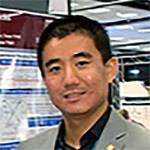
Yuan Yue
- Department: MEEN
- Advisor: Hong Liang
- Research Topic: “Novel Hierarchical Nanocomposites as Electrodes for Electrochemical Energy Storage”
Electrochemical energy storage devices (EESDs) are in demand for portable electronic devices, smart grid, hybrid or electric vehicles, and energy recovery systems. To date, lithium ion batteries (LIBs) and supercapacitors (SCs) are two typical mediums of storage. This research aims at design, fabrication, and characterization of electrodes made of novel hierarchical nanocomposites. Firstly, various types of metallic current collectors with highly porous morphology are fabricated and characterized. Nanostructured, shape-specific, and electrochemically active transition metallic oxide (TMO) particles are subsequently synthesized and directly deposited on such porous current collector. This combination of nanostructured TMO particles and porous current collectors establishes the hierarchical micro-architecture of advanced electrodes. Meanwhile, facile and novel binder-free processing is applied during the assembly. Electrochemical characterization and analysis are conducted to understand the mechanisms of electrochemical interactions, ion transport, and energy storage. The ultimate purpose of this research is to design better electrodes with greater energy density, longer lifespan, enhanced cyclic stability, and lower cost.
2016-17 Fellows
2016-17 ConocoPhillips Energy Institute Fellows

Nafiz Chowdhury
- Department: MEEN
- Advisor: Je-Chin Han
- Research Topic: “Gas Turbine Heat Transfer and Cooling Technology”
Gas turbines are typically used for land-based power plant and aircraft propulsion applications. Demand for higher Turbine Inlet Temperature (TIT) has risen steadily over the last decades for better performing engines with higher efficiency. In the meantime, engine manufacturers have developed advanced designs to provide improved reliability. A portion of this improved temperature capability is due to migration toward enhanced component cooling schemes. As part of the research, experimental investigation is being conducted on the performance of advanced external and internal cooling designs for the first stage turbine blade and endwall at engine-like conditions.

Francisco Tovar
- Department: PETE
- Advisor: Maria A. Barrufet
- Research Topic: “CO2 as an Enhanced Recovery Agent for Unconventional Liquid Reservoirs”
The research project evaluates the technical and economic feasibility of using CO2 to enhance recovery from unconventional liquid reservoirs (ULR) such as oil shale. Horizontal drilling and hydraulic fracturing have enabled the economic exploitation of ULR plays, but the ultimate recovery obtained from the application of such techniques is expected to be marginal. CO2 has proven to be a powerful enhanced oil recovery (EOR) agent in conventional reservoirs, but such success cannot be directly extrapolated to ULR due to fundamental differences in conformation and composition of the rock matrix, that results in important alterations in fluid transport, storage, and phase behavior. The project is mainly experimental. The principal aspects being addressed are incremental oil recovery, CO2 utilization and storage, the effect of the presence of meso- and micro-pores on phase behavior changes, and some operational considerations such as injection scheme and pressure.
2016-17 MP2 Energy Institute Fellows

Jose Leonardo Gomez Ballesteros
- Department: CHEN
- Advisor: Perla Balbuena
- Research Topic: “Computational Materials Science for Energy Applications”
Novel materials are at the forefront of advancement and energy research in all aspects of energy generation and storage to optimization of energy use in processes and devices. Working with Professor Perla Balbuena in the Artie McFerrin Department of Chemical Engineering’s Balbuena research laboratory has enabled me to perform research that focuses on understanding materials behavior and phenomena occurring at the nanoscale using molecular simulation techniques such as quantum mechanics and molecular dynamics. Elucidation of nucleation and growth mechanisms of single-walled carbon nanotubes to produce selective structures to be used in energy applications including storage, photovoltaics and electronic devices; studying reactions occurring at the electrode-electrolyte interface and their effect on performance in Li-ion battery systems, and investigation of the separation capabilities of metal-organic frameworks for gas separation have been specific subjects of this research. The combination of the information obtained from these techniques with experiments is able to provide a clear picture of the phenomena studied and contribute to the advancement of rational materials design.
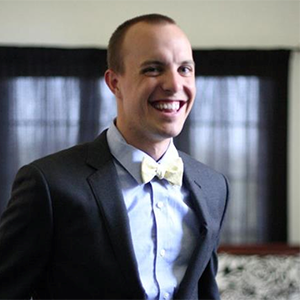
Gregory A. Horrocks
- Department: CHEM
- Advisor: Sarbajit Banerjee
- Research Topic: “Phase Transitions in Binary and Ternary Vanadium Oxides: Implications for Thermochromic Optical Films, and Intercalation Batteries”
Energy conservation and storage have become issues of extreme importance as society begins to move away from reliance on fossil fuels. The diversity of properties and structure within the vanadium oxide family offers desirable materials to address these issues, especially when leveraged by scaling to nanometer sizes. Synthesizing gram scale batches of the highest quality of vanadium dioxide nanowires has allowed for the development of thermochromic glazings that significantly reduce the amount of heat transmitted through windows in hot environments thus reducing the costs of cooling large buildings. The study of lithium-ion storage in nanowires of vanadium pentoxide has also allowed me to develop a mechanistic understanding of how cations move through the host material. Understanding these mechanisms provided a blueprint for developing nanowires of vanadium pentoxide with a novel crystalline structure, reducing barriers to cation mobility and allowing for the inclusion of magnesium-ions, one of only a few known materials capable of accommodating the larger ions.
2015-16 Fellows
2015-16 ConocoPhillips Energy Institute Fellows
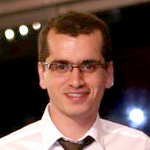
Masoud Alfi
- Department: PETE
- Advisor: Maria A. Barrufet
- Research Topic: “Improving our knowledge of hydrocarbon transfer and storage in shale”
As part of my research, I have been working on simulating different aspects of heat and mass transfer in ultra-low permeability shale reservoirs. This is achieved by proposing a state-of-the-art multiple porosity approach with the objectives of decomposing shale matrix into different porosity systems of distinctive hydraulic and transport properties and applying appropriate physics to capture the complicated nature of oil and gas production in such reservoirs. The proposed model provides a more realistic picture of the production mechanisms, leading to a more reliable prediction of the reservoir behavior.

Chien-Fan Chen
- Department: MEEN
- Advisor: Partha Mukherjee
- Research Topic: “Addressing Electrode Degradation and Microstructure Effect in Energy Storage”
In recent years, lithium batteries, such as lithium-ion and lithium-sulfur batteries are leading the race towards meeting the energy and power requirements for the next generation of hybrid and electric vehicles. The majority of the research has focused on the performance improvement and degradation analysis of lithium batteries. Since the electrode microstructure affects the electrode properties, such as effective ionic conductivity and solid-phase diffusion, the cell performance and degradation phenomena (e.g. formation microcrack and solid electrolyte interphase) vary with the microstructure design. The objective of this research is to develop a microstructure-aware electrochemical model to conduct a fundament study of microstructural effects on cell performance and degradation. The influence of microstructure was observed from the cell performance and electrochemical impedance spectroscopy (EIS).

Dean Ellis
- Department: AERO
- Advisor: Adonios Karpetis
- Research Topic: “Laser diagnostics for high-speed combustion and energy efficiency in extreme environments”
A novel laser diagnostic technique is being utilized to measure the thermochemistry of non-isobaric flows. Vibrational Raman scattering is being used to measure density and composition of major species, (CO2, O2, CO, N2, CH4, h4O, and h4) while rotational Raman scattering is being used to measure temperature. The independent measurements of density and temperature are allowing for the determination of pressure. This line imaging technique is being applied to flows with very high strain rates and Reynolds numbers emanating from a miniaturized combustor. Current work involves transitioning the miniaturized burner into a Moderate or Intense Low-oxygen Dilution (MILD) type of combustion in order to increase the burning efficiency.
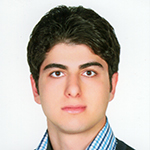
Ahad Esmaeilian
- Department: ECEN
- Advisor: Mladen Kezunovic
- Research Topic: “Preventing Major Blackouts in Smart Electricity Grid Using Wide Area Synchrophasor Measurements”
Power system blackout is a fairly complicated phenomenon with a very low expectation of occurrence, but potentially devastating social and economic impacts. Studies have revealed that a series of cascading events, such as transmission line outages and malfunctions of protective relays have been among the main reasons of recent blackouts. My research is focused on the development of a wide area synchrophasor-based protection and control scheme to predict and mitigate cascade event outages to prevent major blackouts. Due to operation based on synchronized data from different part of system, the proposed method grasps better understanding of power grid behavior, such as stability margin, load change pattern, and generation reserve margin.

Brett A. Miller
- Department: LAW
- Advisor: Gina S. Warren
- Research Topic: “Regulatory Implications of Renewable Energy’s Copper-Dependence: Can the Renewable Sector Borrow Lessons in Corporate Sustainability from the Global Petroleum Industry by Embracing the Energy-Environment Contradiction to Seize a Competitive Economic Advantage?”
“Renewable” refers to the energy source being converted into electricity, not the significant quantities of raw materials—such as copper—required to implement and maintain the infrastructure performing the actual conversion. As the capacity for renewables increase, so too will the global demand for copper production. Unable to effectively regulate the relationship between copper mining and the renewable sector, the legal ramifications of developing substantial copper deposits, both in the U.S. and Mexico, illustrate the regulatory challenges arising from the energy-environment contradiction. Environmental issues challenge global resource development, constraining business objectives throughout the raw material supply-chain. Nevertheless, petroleum corporations utilize aspects of corporate sustainability to maximize efficiency and profitability—initiatives that could benefit the renewable energy industry and its dependence on copper production.

Xinghua Pan
- Department: CHEN
- Advisor: M. Nazmul Karim
- Research Topic: “State and parameter estimation for fault detection and control”
Pipelines are one of the most economical and reliable transportation methods for chemicals. However, catastrophes associated with leaks in pipelines have raised safety concerns. New software-based leak detection methods for natural gas pipelines are being designed. The natural gas pipeline leak detection problem is being tackled by considering the effect of thermal properties, leak detection in a pipeline with time-variant consumer usage, and as well as multiple leaks isolation and location estimation. Also, the practical issues associated with the leak detection such as pump station pressure oscillations and temperature changes are receiving consideration. Unlike the current Real-Time Transient Analysis method that needs extensive instrumentation, a new estimation algorithm is being applied to estimate the effect of thermal properties and eliminate their influence on leak detection without requiring new instrumentation.

Gang Yang
- Department: MEEN
- Advisor: Choongho Yu
- Research Topic: “Designing 3D Nanostructured Carbon Materials for Li-S Batteries and Fuel Cells”
In the past two years of Ph.D. research, I have been focusing on energy conversion and storage systems, of which the performances have been greatly improved by multi-dimensional nanostructured carbon materials. In particular, I have developed an easy-scale-up and low-cost method to produce 3D carbon nanotube sponges, which have been successfully used in energy conversion systems such as the proton exchange membrane fuel cells (PEMFC) and microbial fuel cells (MFC). Additionally, I am also working on designing new cathodes and anodes for Li-S batteries which have shown five times higher energy density than traditional Li-ion batteries – by using our carbon nanotube sponge-enabled novel electrodes.

Shuai Yuan
- Department: CHEM
- Advisor: Hongcai Joe Zhou
- Research Topic: “Metal-Organic Frameworks for Energy Conversion and Storage”
MOFs, known as metal-organic frameworks, are a promising class of highly ordered porous materials with potential applications in gas storage, catalysis, and photoelectric devices. However, their practical applications in energy conversion and storage are hampered by their sensitivity to ambient moisture. My research is focused on the synthesis of stable MOFs for energy conversion and storage. It aimed at both the synthetic methodologies of stable MOFs and their clean energy related applications. Ultimately, we expect to commercialize our materials for energy conversion, harvesting, and storage.
2015-16 MP2 Energy Institute Fellow
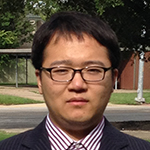
Kecheng Wang
- Department: CHEM
- Advisor: Hongcai Joe Zhou
- Research Topic: “Rational design of stable MOFs for carbon capture and methane storage”
As an emerging class of novel materials, metal-organic-frameworks (MOFs) have attracted great interest in the last few decades. Their modular nature endows these materials with structural diversity and tunable functionality. My research focus is on exploration of tailor-made MOFs for different energy related applications, including methane storage and CO2 capture. We have synthesized several MOFs with great stability, high performance and comparatively low cost, which make them potentially possible for commercial production and real-world applications.
